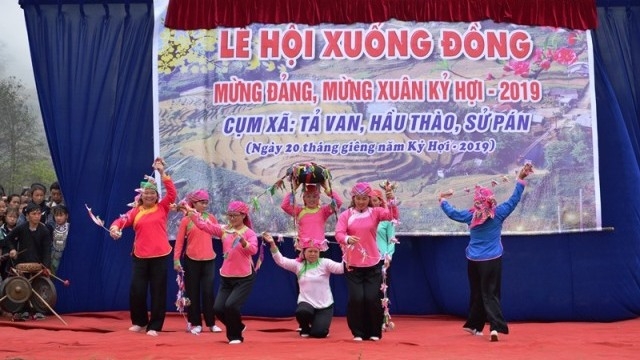


|
|
|
|
The festival attracted a large number of domestic and
international visitors, contributing to promoting the development of
community-based tourism.
Annually, on the day of the dragon of the first lunar month, the
Giay in Sa Pa, Lao Cai northern province, opens Roong Pooc(going down the
field), the festival dedicated to the Jade Emperor, fairies and deities,
praying for their blessing for prosperity, peace and fine weather throughout
the year. Giay people believe if they fail to celebrate Roong Pooc in a year,
they will encounter numerous difficulties in that year, suffering misfortunes
such as illness and natural disasters.
Roong Pooc starts with a sorcerer’s ritual offering. The
offerings, which symbolize prosperity, include cloth, eggs, bamboo shoots,
silver coins and 6 qua con (cloth balls) made by unmarried girls. Closing the
ritual, the sorcerer gives the cloth balls to prestigious old villagers to
throw them through a ring put on a high bamboo pole. Symbolizing the sun and
moon, this ring has one side stuck with red paper and the other with yellow
paper. When the ball is thrown through the ring, each family in the village
burns incense on the altar set up for the offering rite to pray for good luck
for their family and village.
|
Source: NDO